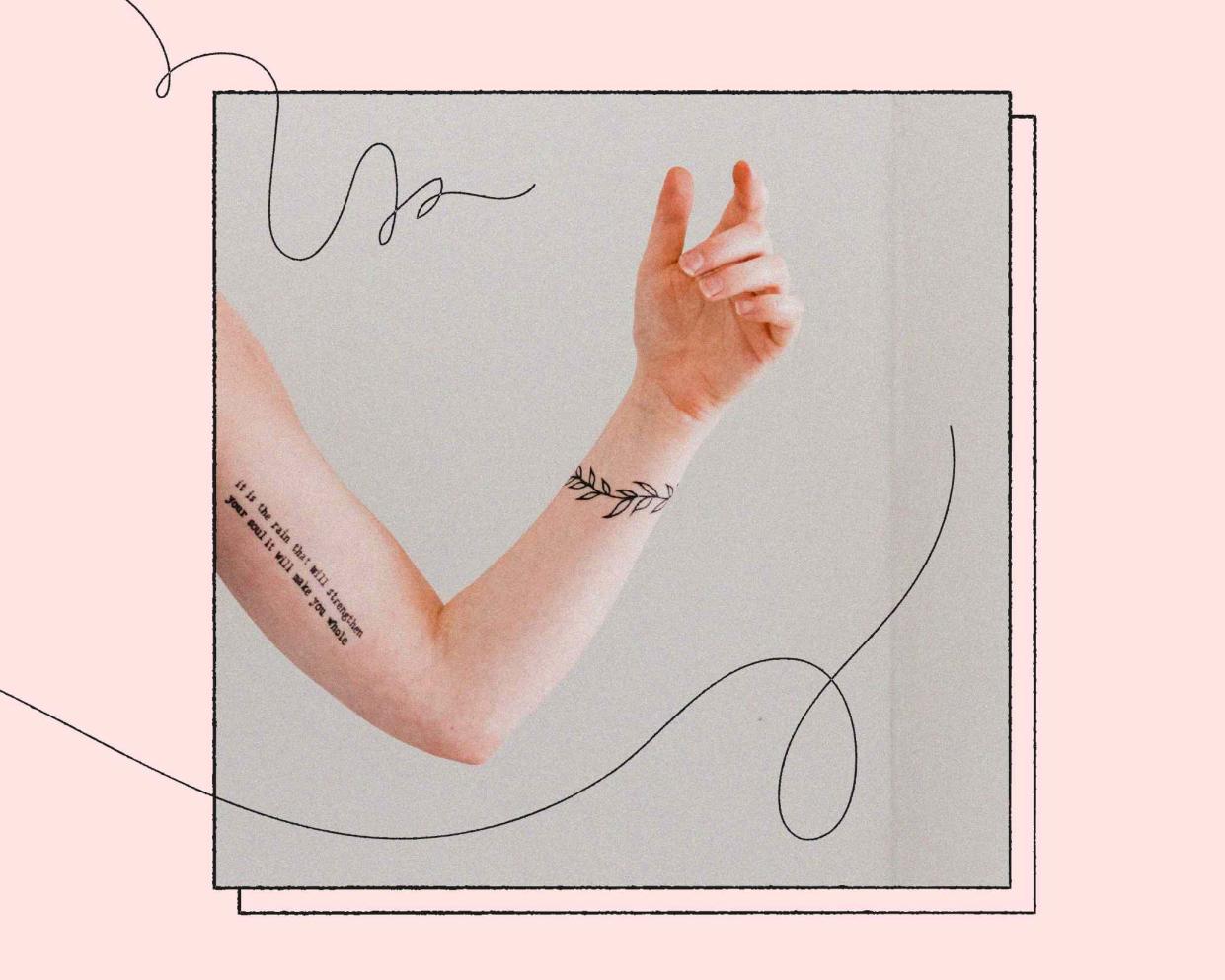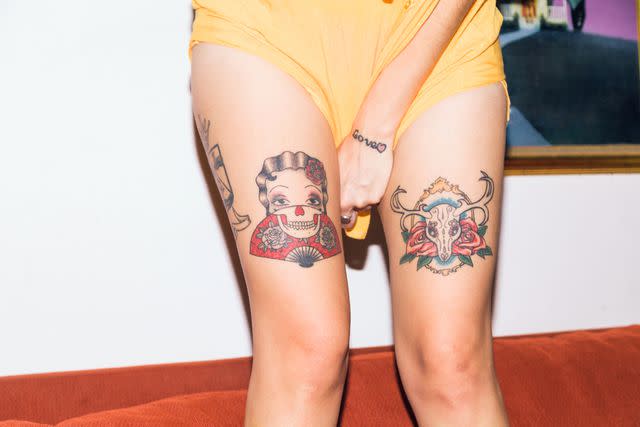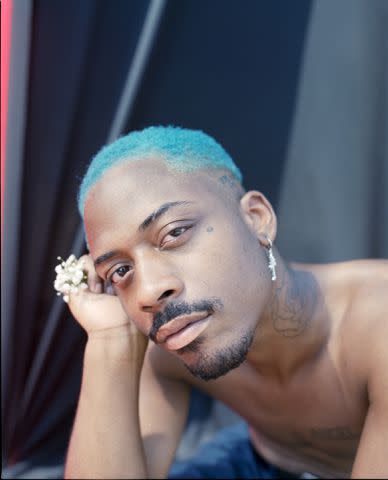The Pros and Cons of Gray, Color, and Black Tattoos

Stocksy / Design by Camden Dechert
Fact checked by Anna HarrisReviewed by Dendy Engelman, MD, FACMS, FAAD
There are a lot of decisions to make when choosing a tattoo—artist, design, size, location, etc. But one of the most important ones will be determining whether your tattoo should be in gray, color, or black ink. And while we love spontaneity as much as the next person, giving a bit of forethought to your ink color will make the whole process smoother. Not sure where to start? We talked to professional tattoo artists Dillon Forte and Nick the Tailor to get all the info on what to consider. Read on to learn more about your color options and which is best for you.
Meet The Experts
Dillon Forte is a tattoo artist that counts folks like Kehlani, Usher, and Chris Hemsworth among his clients. He specializes in black and white geometric pattern work at Sri Yantra Tattoo in Oakland, California.
Nick "the Tailor" Solomon, is a tattoo artist and founder of the New Chapters Tattoo Project. He specializes in black and white, finely-detailed work, and is the shop owner of Crown and Feather Tattoo Co. in Philadelphia.
The Benefits of Color Tattoos

Eldad Carin / Stocksy
If you want a tattoo as bright as your personality, then color is the way to go. Several tattoo styles naturally embody colorwork: Old School Traditional, New School, Watercolor, Japanese, and Illustrative are all styles that lend themselves well to color. Some tattoo artists specialize in colorwork, or a particular style of tattoo, which is why checking out portfolios is so important.
"When choosing an artist, one should look at their portfolios and pick someone who they are most in alignment with, and let them do their job and trust the process," says Forte. Be sure to check out photos with healed tattoos instead of fresh work; a healed tattoo will look different without the swelling, irritation, and possible bleeding from a brand-new piece.
Set on color for your new ink? Also consider the size of your piece. "Colorwork has brightness and hue as well as value to consider," says Nick, "so you have more options, but at a small scale, many of the colors will visually blend and become muddy." Your artist may suggest changing your piece's size to maintain color integrity or simplifying the color palette to avoid a dirty-looking result.
Byrdie Tip
Do you have questions, doubts, or concerns about the tattoo process, or have you changed your mind on some aspects of your piece? Don't be afraid to speak up! "If there’s something about the design or placement that you would like to change, please say something," says Nick. "Tattoo shops can be an intimidating place—but it’s best for everyone if you express your feelings."
The Benefits of Black and Gray Tattoos

We Are / Getty Images
Looking for a bold, stark contrast, or intricate patterns? Black and gray tattoos might just be what you're looking for. Realism, Tribal, and Blackwork are all styles of tattoo that are well suited to this simple but never boring palette. But wait—there are variations of monochromatic tattoos. "There are three types of black and gray tattoos," says Nick. "First is blackwork, which is only black ink and skin tone, with no gradation. The second is black and gray, which uses black ink mixed with water to create lighter and darker tones. Lastly is ‘opaque gray’ tattoos, which use black ink mixed with white ink to create the color gray." Peruse examples of these three categories to determine which will be the best fit for you.
Trends like teeny finger tattoos, small scripts, and delicate designs can all be executed beautifully in black and gray. "Tighter, more detailed [designs] tends to work better in black and gray," says Nick. "With black and gray, the most important consideration is value. Light vs. dark tones. This lends itself to readability, even on a small scale."

Westend61 / Getty Images
The Appointment and Aftercare
The length of your appointments and how many you will need to complete your design vary widely from artist to artist and client to client. "A general rule of thumb is scale and intricacy increase time," says Forte. "So if [the tattoo is] large and intricate, it will take a lot of time." Communication with your artist during the process is key to ensuring you both stay comfortable and get the best result.
Byrdie Tip
Eat a healthy breakfast before you head out to get inked. "Do not come to the appointment hungry, as this can cause a drop in blood sugar," warns Nick. You might consider bringing some snacks with you if you've got a long session planned.
Tattoo aftercare—regardless of if you choose a full rainbow palette or more film noir—is crucial. Washing your ink frequently with gentle soap keeps it clean during the healing process. Keeping the skin moisturized will help take the edge off the extreme itching as your tattoo heals. And lastly, slathering on a hearty SPF whenever you're headed outside will keep your design as crisp and bright as it was on day one.

Adolescent Content/Brandon Stanciell / Getty Images
The Final Takeaway
If you do your research, communicate with your artist, and commit to proper care, your personal piece of artwork will stay bold and vibrant for years to come.
Up Next: Behold: All the Tattoo Inspiration You Need
Read the original article on Byrdie.